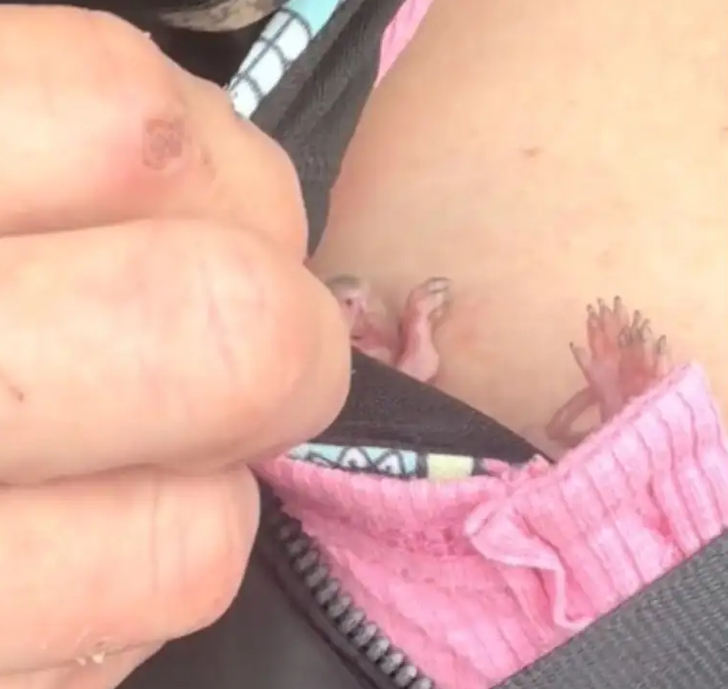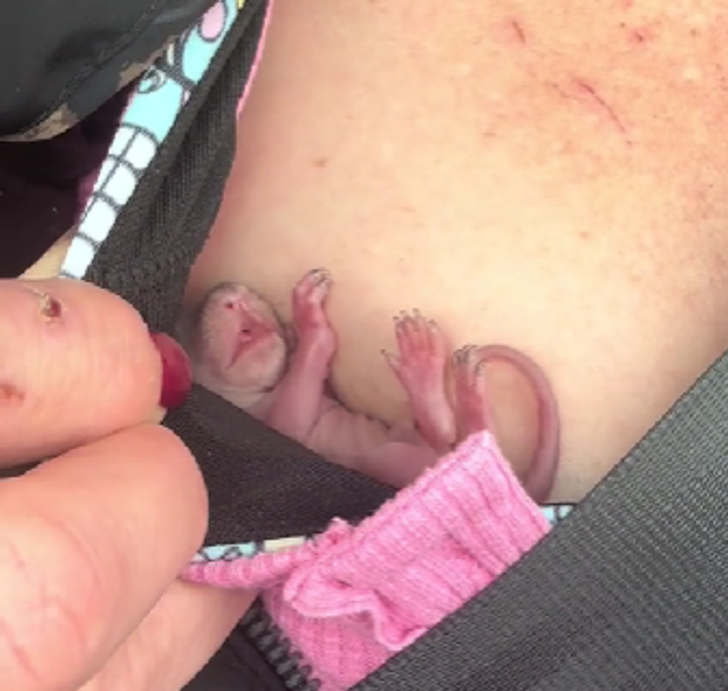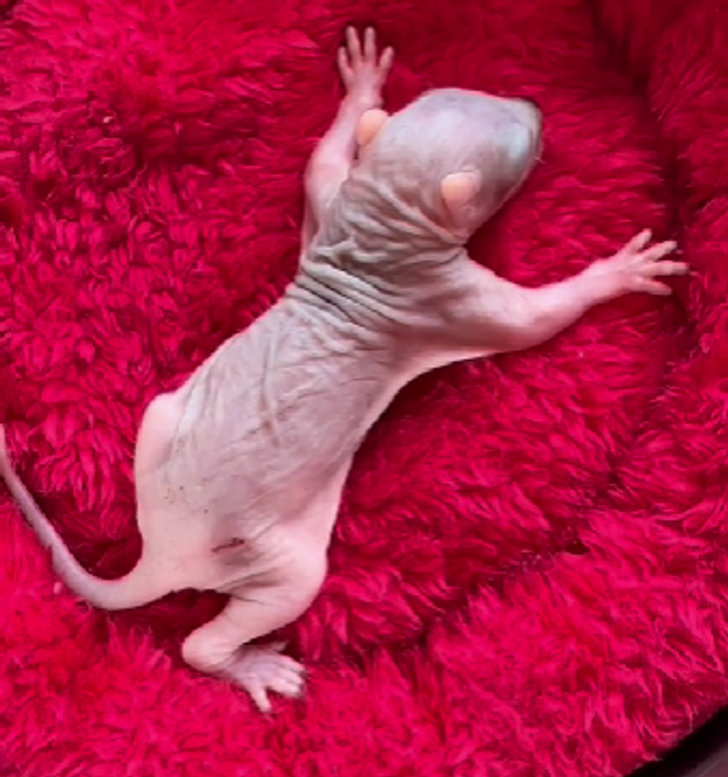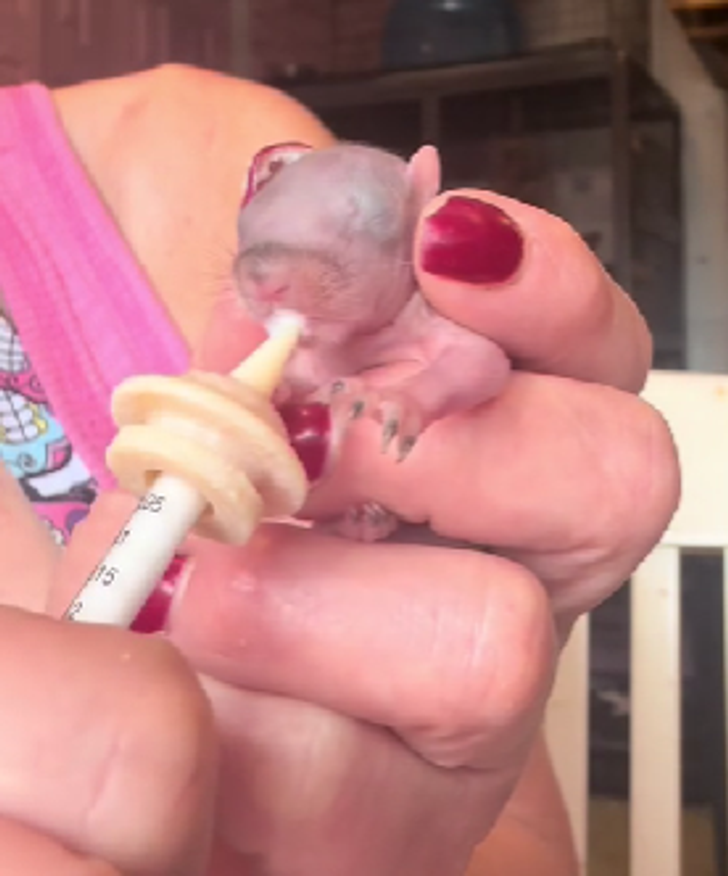A rescue mission that she wouldn’t deny.

In a recent heartwarming tale that exemplifies her commitment, Stracher embarked on yet another rescue mission. It all began when she was told that a days-old baby squirrel was found struggling for survival in a local park. Without a moment’s hesitation, despite already being en route to another call, Stracher rerouted her path to come to the aid of the tiny creature.
Upon arriving at the park, Stracher rapidly went into action, cuddling the fragile baby squirrel close to her heart, nestled safely inside the warmth of her shirt. This act of immediate care wasn’t merely impulsive; it proved Stracher’s profound understanding of the needs of the animals she rescues. In an interview, she shared the importance of skin-to-skin contact in comforting distressed animals, especially the vulnerable and the young.

The baby squirrel was in a critical condition.
The baby squirrel, just days old and already displaced from its family, was in urgent need of nourishment and care. With an innate sense of urgency, Stracher hurried back home, equipped with the necessary supplies, including squirrel formula made to meet the unique dietary requirements of these delicate creatures.
According to Stracher, the task of nurturing a baby squirrel is a round-the-clock task. These tiny beings demand frequent feeding sessions, typically every two to two and a half hours, as well as assistance in basic bodily functions, such as going to the bathroom. At this early stage of development, they rely entirely on external care, unable even to open their eyes.
What the future holds for the squirrel.

As weeks pass, Stracher’s tender care and meticulous attention to detail become increasingly evident in the remarkable progress of her charges. Around six weeks of age, she introduces the growing squirrel to soft solid foods, gradually transitioning to crunchy fare by seven and a half to eight weeks. It’s a gradual process focused on preparing the squirrel for life in the wild, where self-sufficiency is key.
Interestingly, Stracher’s approach extends beyond mere physical rehabilitation. She strategically minimizes human interaction as the squirrel grows, creating a healthy fear and wariness of humans. This intentional distancing is crucial to prevent the squirrels from relying on humans, ensuring they retain their natural instincts and behaviors necessary for survival in their native habitat.
Karenlynn Stracher’s biggest joy.

For Stracher, the ultimate reward comes in the form of releasing her rehabilitated animal back into the wild. Around mid-July, the squirrel should already be fit. And Stracher will bid farewell to her furry friend. She will watch with pride as it runs off into the sunlight, embracing the freedom of its natural environment.
Karenlynn Stracher’s story is not just one of individual heroism; it reminds us of the profound impact that one person’s dedication and compassion can have on the lives of countless creatures. Through her tireless efforts, she not only saves lives but also restores hope and dignity to those who would otherwise be forgotten.
